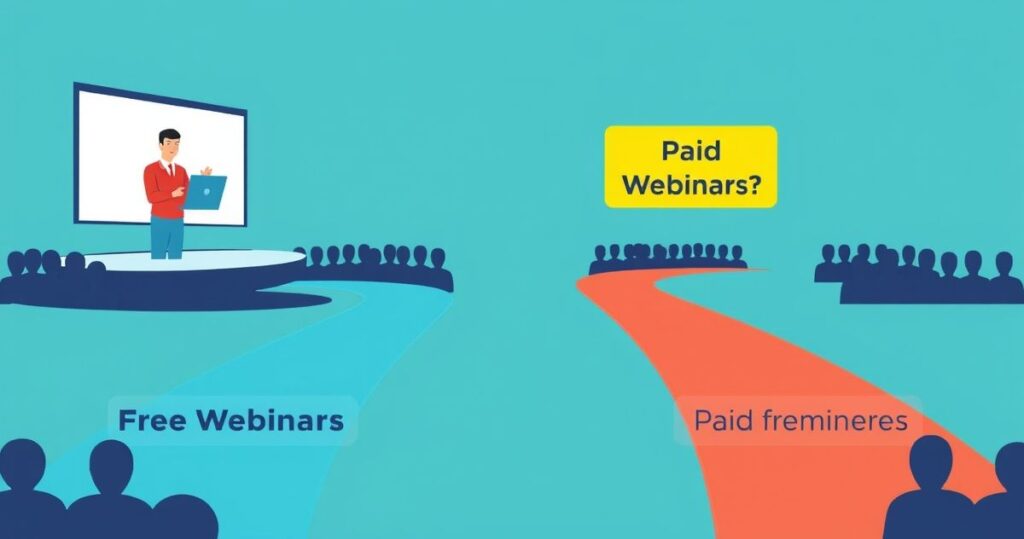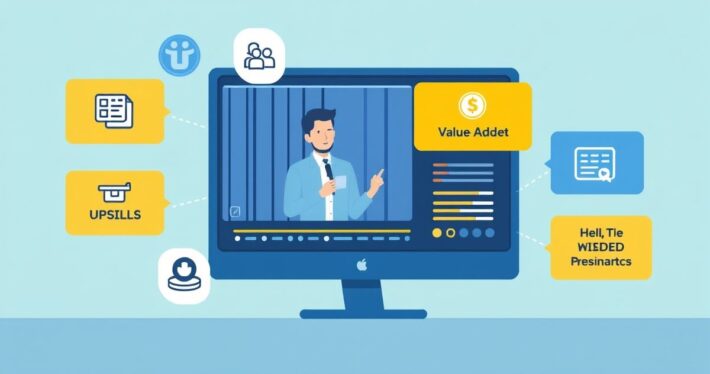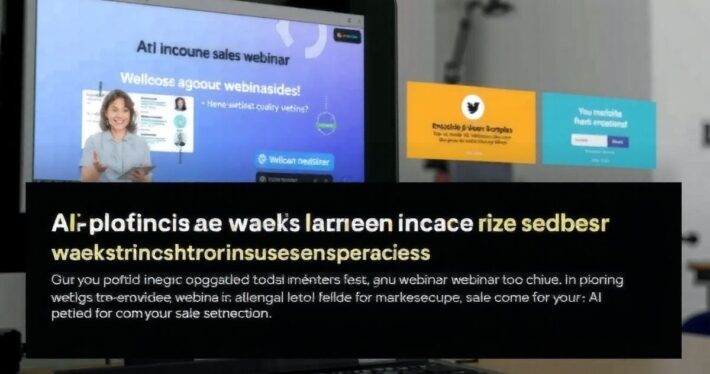How to Charge for Webinars: Free vs. Paid Models

Webinars have become one of the most powerful tools in the digital marketing arsenal. But here’s the million-dollar question: should you charge for them or offer them for free? The decision isn’t as straightforward as it seems. Whether you’re looking to build trust, generate leads, or directly monetize your expertise, choosing the right pricing model can make or break your webinar strategy. Let’s break it down.
Why Webinar Pricing Matters
Your pricing model isn’t just about revenue—it’s about positioning. Charge too much, and you might scare off potential attendees. Offer it for free, and you risk undervaluing your expertise. The key is to align your pricing strategy with your goals. Are you looking to build an audience, establish authority, or drive immediate sales? Each objective calls for a different approach.
(Here’s a thought: Have you ever attended a free webinar that felt like a watered-down sales pitch? Yeah, we’ve all been there. Don’t be that person.)
The Free Webinar Model: Building Trust and Growing Your Audience
Free webinars are like the front door to your business. They’re an invitation to build relationships, showcase your expertise, and grow your email list. Here’s why they work:
- Low Barrier to Entry: People are more likely to sign up when there’s no financial commitment.
- Lead Generation: Free webinars are a goldmine for growing your email list (if you’re doing it right).
- Brand Building: They help establish your authority in your niche.
But—and this is a big but—free webinars should still deliver value. I’ve seen too many businesses use free webinars as a bait-and-switch tactic, leaving attendees feeling underwhelmed. Instead, think of your free webinar as a high-value infomercial. Teach something actionable, build trust, and then introduce your paid offers naturally.
Real-World Example: A fitness coach offers a free webinar on “5 Tips to Boost Your Metabolism Without Dieting.” During the session, she demonstrates her expertise and offers a paid program for attendees who want personalized guidance. Result? She generates 200 sign-ups and converts 10% into paying clients.
The Paid Webinar Model: Monetizing Expertise
Paid webinars are the VIP experience of the webinar world. They’re for people who are serious about the topic and willing to invest in their education (or entertainment). Here’s why you might consider charging:
- Higher-Quality Audience: People who pay are typically more engaged and committed.
- Direct Revenue: This is your chance to monetize your expertise upfront.
- Positioning: Charging for your webinar positions you as an authority in your field.
Of course, the challenge here is convincing people to pay. That’s where your marketing skills come in. You’ll need a killer title, a compelling description, and a clear promise of the value they’ll receive.
How to Set the Right Price
Pricing your webinar can feel like walking a tightrope. Charge too little, and you devalue your expertise. Charge too much, and you’ll struggle to fill seats. Here’s a simple framework:
- Beginner Content: $27-$97
- Intermediate Content: $97-$197
- Advanced Content: $197-$497
For example, a social media consultant might charge $97 for a webinar on “Advanced Instagram Strategies for Small Businesses.” The key is to match the price to the perceived value.
Pro Tip: Use bonuses and guarantees to make the decision a no-brainer. (More on this later.)
Hybrid Models: The Best of Both Worlds
Here’s where it gets interesting. Why choose between free and paid when you can do both? Hybrid models allow you to cater to different segments of your audience. Here are a few ideas:
- Free + Upsell: Offer a free webinar with an optional paid upgrade (e.g., a recorded version, bonus materials, or one-on-one coaching).
- Freemium: Provide a free introductory webinar and a paid in-depth series.
- Pay-What-You-Want: Let attendees choose their price (great for testing the waters).
Case Study: A business coach offers a free webinar on “How to Land Your First 100 Clients.” During the session, he introduces a paid 6-week masterclass. Result? He fills 20 spots at $497 each within 48 hours.
How AI Tools Can Help You Decide
If you’re still on the fence about which model to choose, here’s where AI-powered tools can be a game-changer. Tools like Webinar Offer Builder can help you structure your pricing and position your offer for maximum conversions. Need bonus ideas to sweeten the deal? High-Value Bonus Brainstormer has you covered. And if you’re worried about risk, the Risk-Reversal/Guarantee Generator can create guarantees that make saying “yes” feel like a no-brainer.
(Full disclosure: I’ve used these tools myself, and they’ve saved me hours of brainstorming.)
Practical Tips for Success
Regardless of which model you choose, here are some universal tips to make your webinar a hit:
- Know Your Audience: Tailor your content to their pain points and goals.
- Deliver Value: Overdeliver on your promises to build trust and credibility.
- Test and Optimize: Experiment with pricing, formats, and CTAs to see what works best.
- Leverage Bonuses and Guarantees: These can significantly boost conversions.
Quick Story: I once ran a $197 webinar and included a bonus worth $500. Not only did it sell out, but attendees raved about the value they received. Lesson learned? Don’t underestimate the power of bonuses.
Free vs. Paid: Which Should You Choose?
So, how do you decide? Here’s a simple decision matrix:
| Goal | Free Webinar | Paid Webinar |
|---|---|---|
| Build an Email List | ✓ | ✗ |
| Establish Authority | ✓ | ✓ |
| Generate Immediate Revenue | ✗ | ✓ |
| Test a New Idea | ✓ | ✗ |
| Attract High-Quality Leads | ✗ | ✓ |
The bottom line? There’s no one-size-fits-all answer. It all depends on your goals, audience, and stage of business.
Final Thoughts
Whether you choose a free, paid, or hybrid model, the key is to focus on delivering value. Your audience should walk away feeling like they’ve gained something meaningful—whether they paid for it or not. And remember, your pricing model isn’t set in stone. Test, tweak, and optimize as you go.
Now, here’s my challenge to you: Run one free and one paid webinar in the next 90 days. Compare the results and see which aligns best with your goals. You might be surprised by what you discover.



